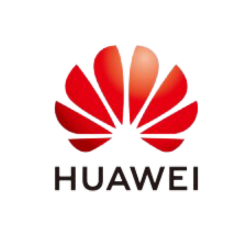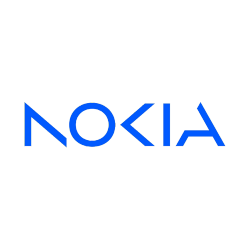
Introduction to the Eten G500
The Eten G500, announced in the first quarter of 2006, was a handheld device that blended the functionality of a mobile phone with the features of a personal digital assistant (PDA). This device, marketed towards professionals and tech enthusiasts, was notable for its GPS capability, a rarity at the time.
Design and Build
The Eten G500 featured a robust design with dimensions of 119 x 62 x 23 mm, making it relatively compact yet slightly bulky with a weight of 191 grams. The build was designed to accommodate a mini-SIM card, which was a popular choice during that era. Its exterior was fashioned to be durable, suitable for daily use in various environments.
Display
The device sported a 2.8-inch TFT resistive touchscreen display capable of displaying 65K colors. With a resolution of 240 x 320 pixels and an approximate pixel density of 143 ppi, the screen provided a satisfactory viewing experience for the time. The resistive touch technology, which required a stylus for precise input, was standard for devices from that period.
Operating System and Processor
Running on Microsoft Windows Mobile 5.0 PocketPC, the Eten G500 provided users with a familiar desktop-like experience. The device was powered by a Samsung S3C2440 processor clocked at 400 MHz. This combination offered adequate performance for the multitasking demands of the basic apps and programs available at that time.
Memory and Storage
The Eten G500 came with 64MB RAM and 128MB ROM, which was fairly standard for PDAs. Additionally, the device featured a miniSD card slot, allowing users to expand the storage capacity as needed, enabling them to store more documents, pictures, and media files.
Camera
The device was equipped with a 1.3 MP main camera, complemented by an LED flash, allowing for basic photography needs. It also supported video recording, a bonus feature at the time even though the resolution and quality were modest.
Audio
The G500 featured a loudspeaker for audio output and supported vibration alerts, as well as polyphonic and MP3 ringtones. It, however, lacked a 3.5mm audio jack, which was a limitation for users wishing to connect standard headphones for private listening.
Connectivity and Network
The device supported GSM technology across the 850/900/1800/1900 MHz bands, making it globally capable for voice calls and SMS. It supported GPRS for basic internet connectivity but lacked EDGE capability. Bluetooth 2.0 provided wireless connectivity options for compatible devices.
GPS Capability
One of the defining features of the Eten G500 was its built-in GPS, which set it apart from many contemporaries. This feature was aimed at mobile professionals needing navigation assistance, serving as an early iteration of GPS functionality in mobile devices.
Battery Life
The device was powered by a removable Li-Ion 1440 mAh battery, offering up to 220 hours of standby time and approximately 4 hours of talk time. This ensured that users could go about their day with reliable battery support, which was crucial for the target professional demographic.
Discontinuation
Despite its innovative features, the Eten G500 was eventually discontinued as technology rapidly evolved, and more advanced smartphones hit the market. Nonetheless, it remains a notable piece of technology history for its contributions to integrating PDA functionality with mobile telephony and GPS navigation.
Conclusion
In summary, the Eten G500 was a pioneering device of its time, aimed at providing a comprehensive solution for users who needed more than just a mobile phone. While it may seem basic by today's standards, its blend of functionality and features made it a sought-after device in its heyday. It reflects an era where the foundations for today's smartphone technology were being laid.
Key Features of Eten G500
- Quad-band GSM support (850/900/1800/1900 MHz) for global compatibility
- Compact design with dimensions of 119 x 62 x 23 mm
- Resistive touchscreen with 65K colors for user interaction
- 2.8 inches display with a resolution of 240 x 320 pixels
- Powered by Microsoft Windows Mobile 5.0 PocketPC OS
- Equipped with Samsung S3C2440 400 MHz processor
- 128MB ROM and 64MB RAM with miniSD card slot for expandable storage
- 1.3 MP main camera with LED flash for basic photography
- In-built GPS positioning for navigation purposes
- Bluetooth 2.0 for wireless data exchange
- Removable Li-Ion 1440 mAh battery offering up to 4 hours of talk time
Eten G500 Key Disadvantages
- No EDGE support; limited to GPRS Class 10.
- Device is discontinued, limiting support and availability.
- Heavy build at 191 g, which can be cumbersome for users.
- Low screen-to-body ratio (~32.9%), resulting in a smaller display area.
- Outdated operating system (Microsoft Windows Mobile 5.0 PocketPC).
- Limited RAM (64MB) and ROM (128MB), which can affect performance.
- No front-facing selfie camera.
- Lacks a 3.5mm headphone jack, limiting headphone compatibility.
- No WLAN (Wi-Fi) capability for internet access.
- No FM or other radio available.
- Uses a proprietary USB port rather than a standard one.
- Limited sensor capabilities.
- Relatively short talk time of up to 4 hours.
- High initial price point of about 300 EUR for its feature set.

View Also
More Phones
All Rights Reserved +14268 Phones © Mobilawy 2025
























